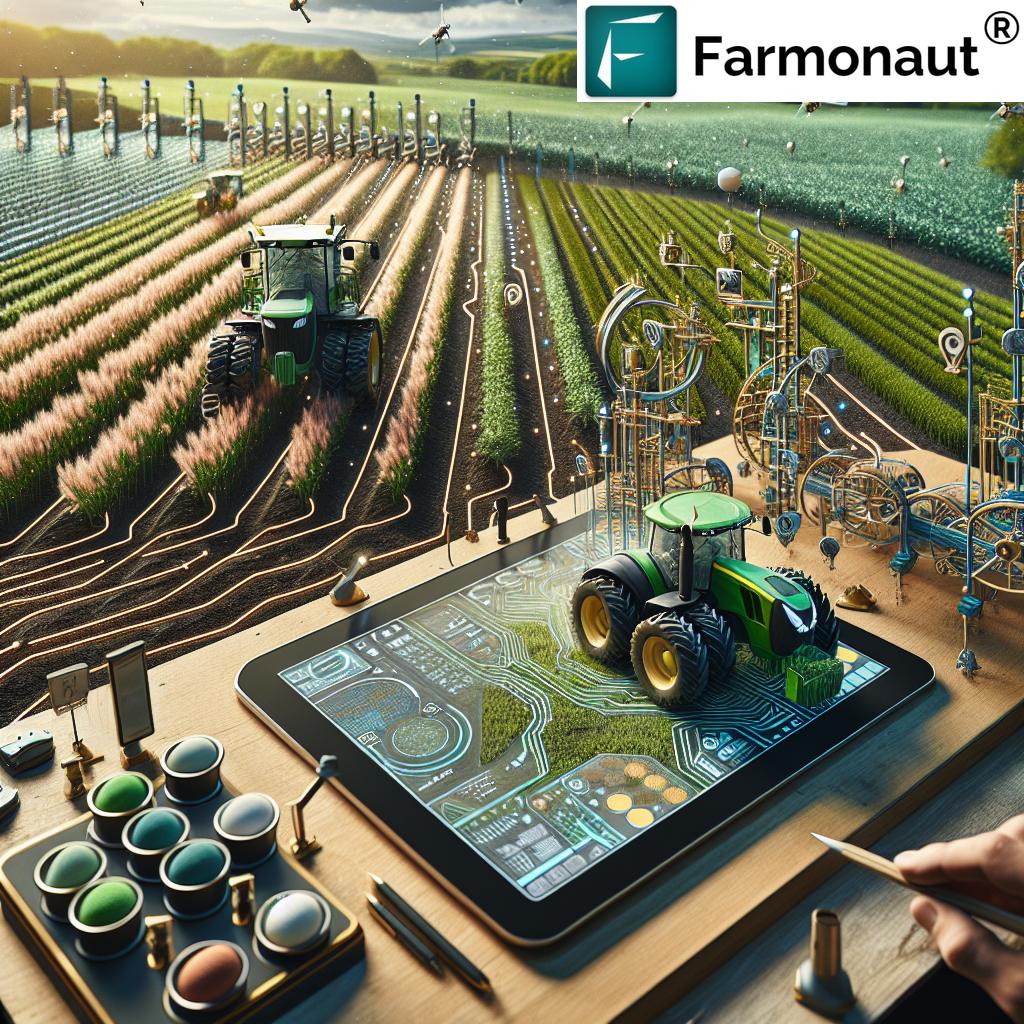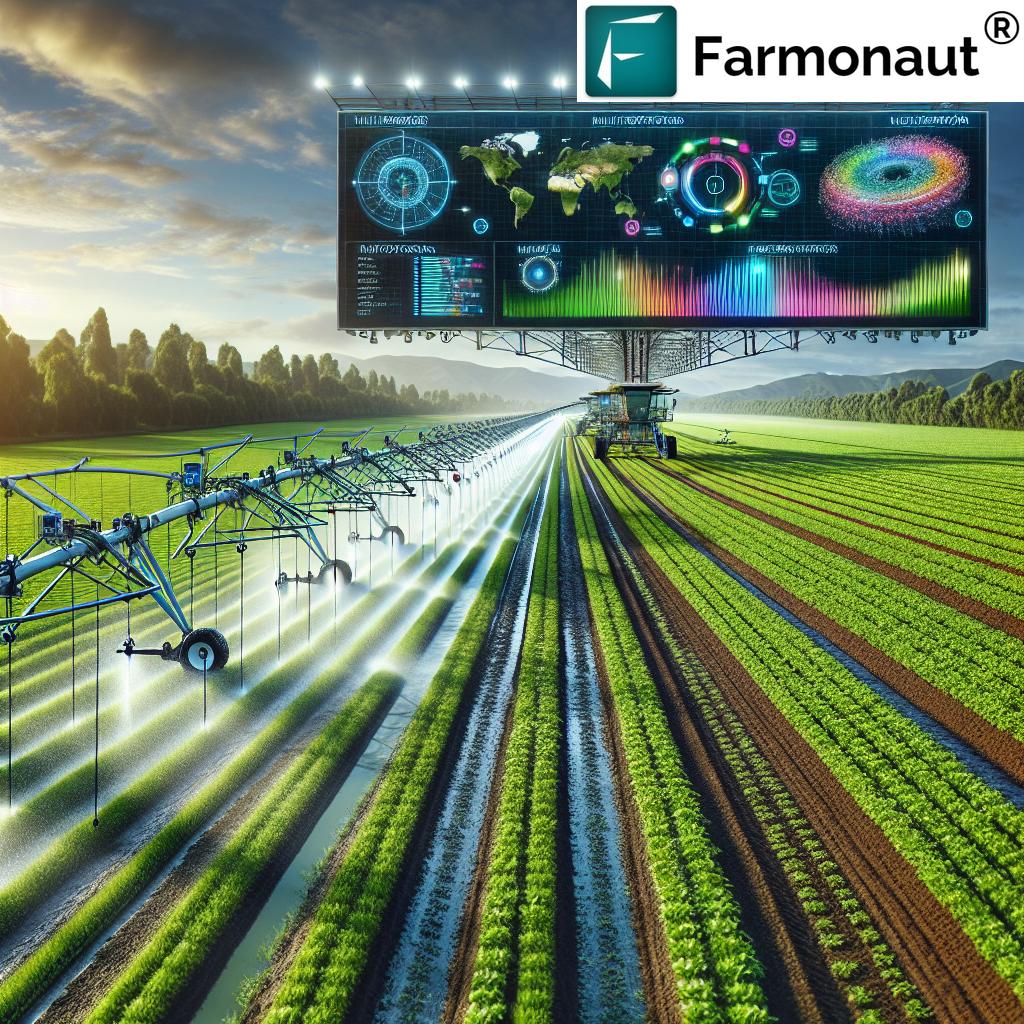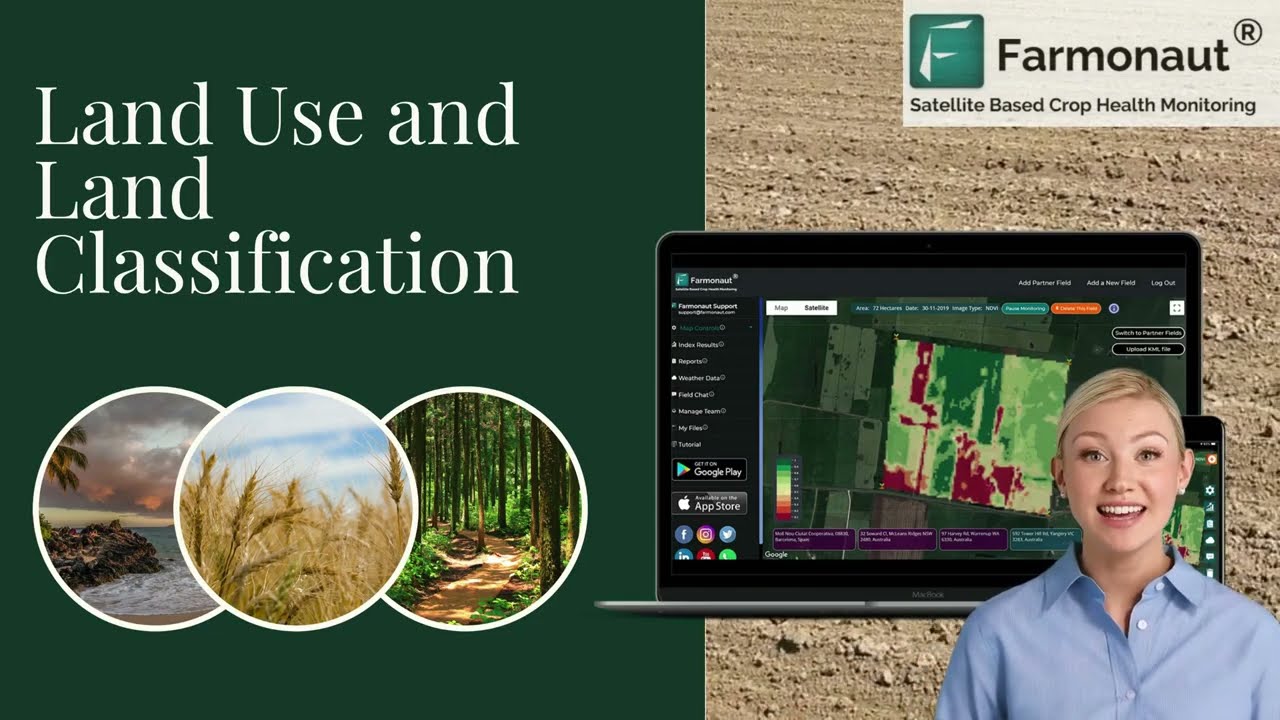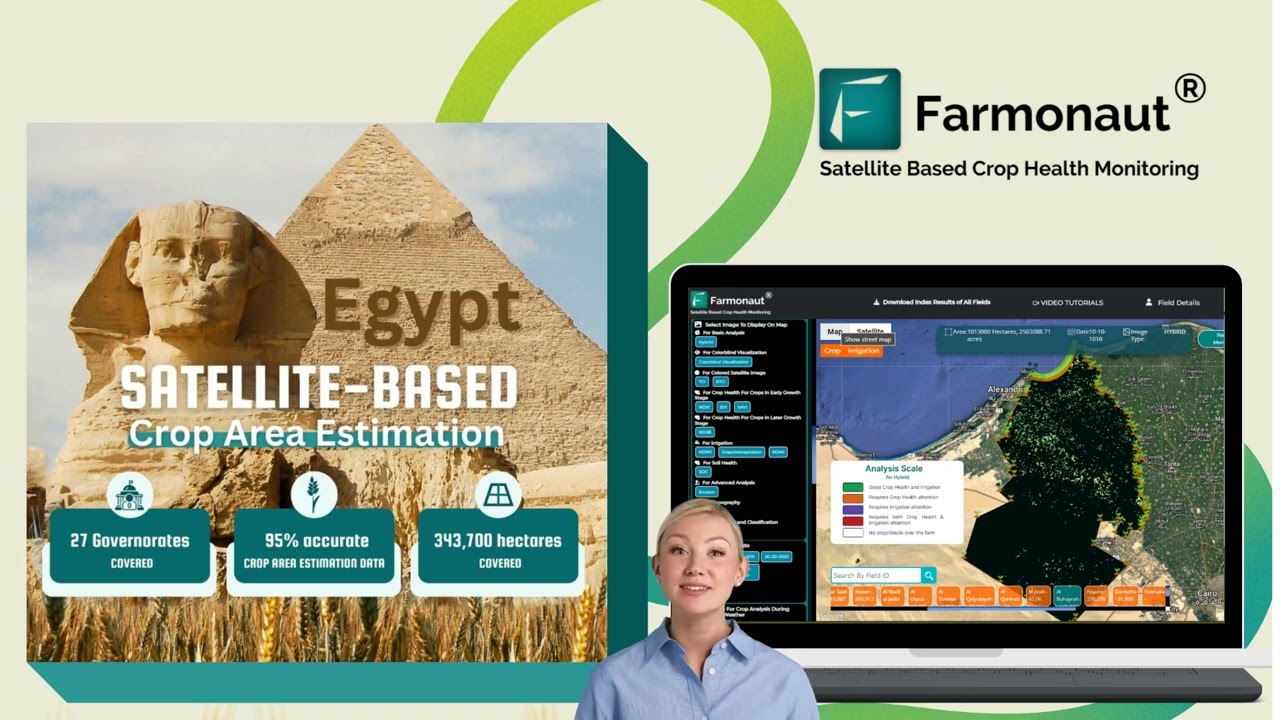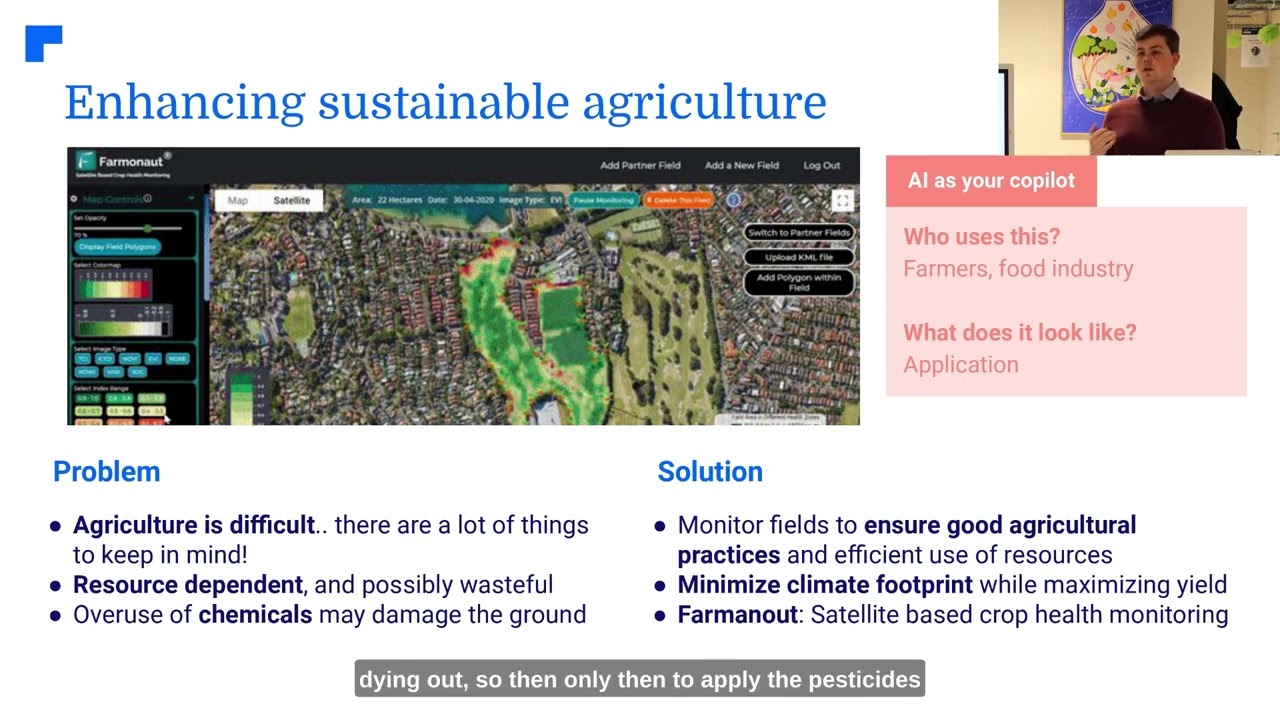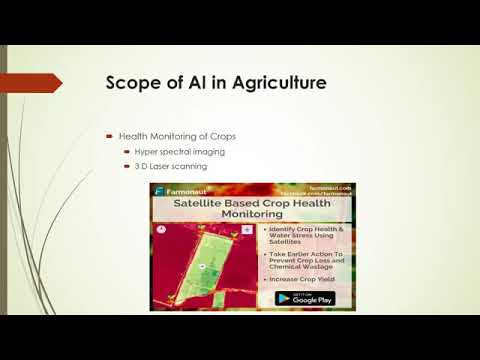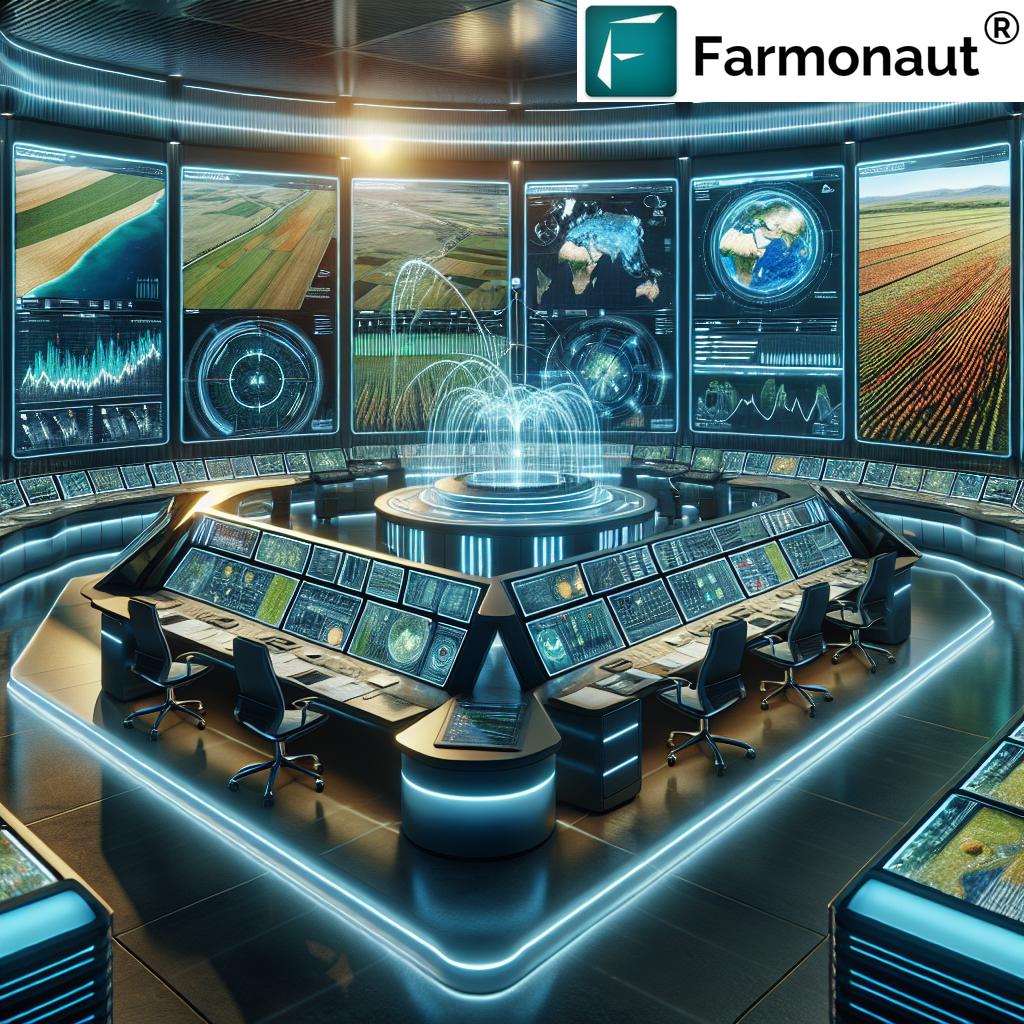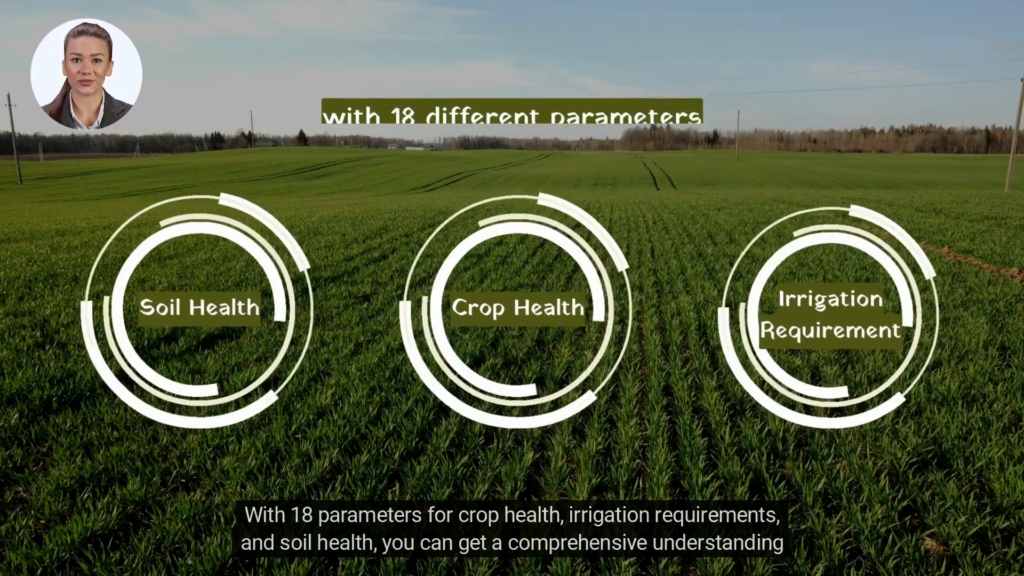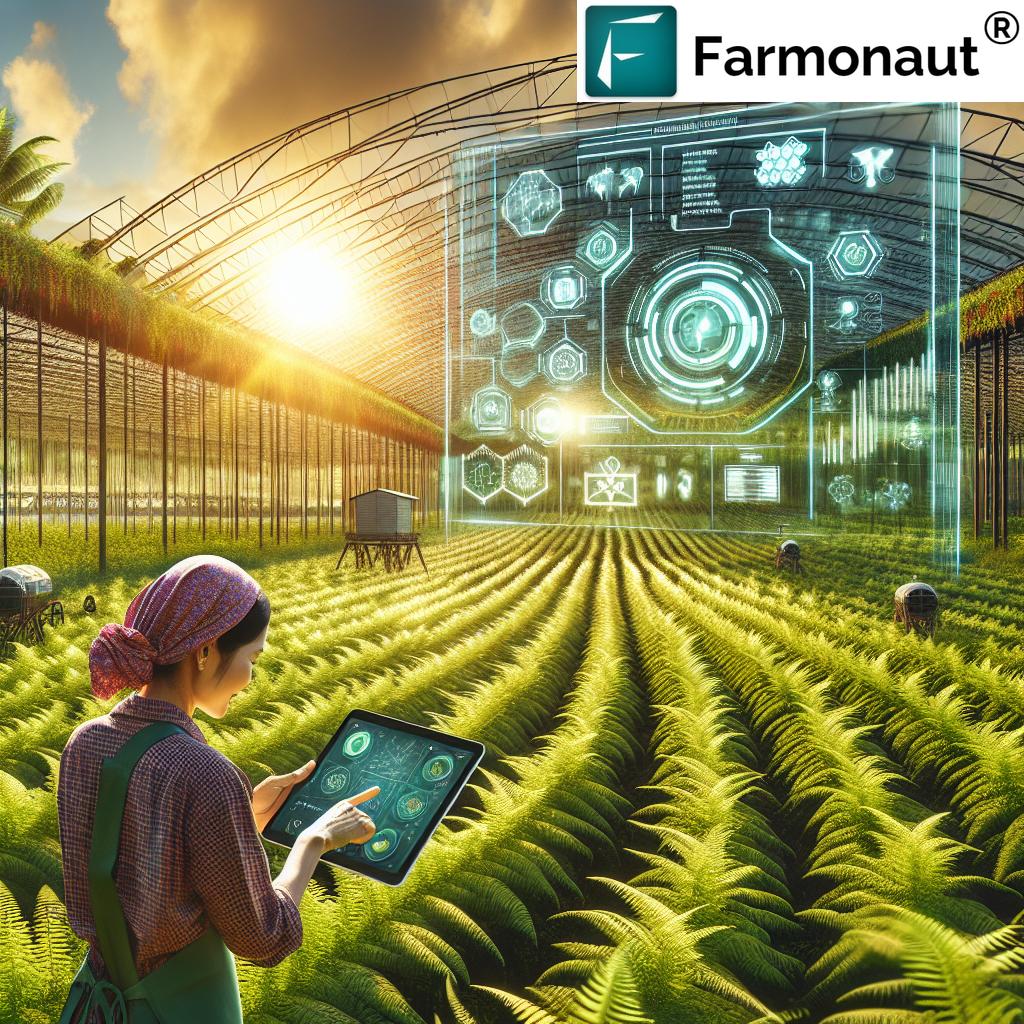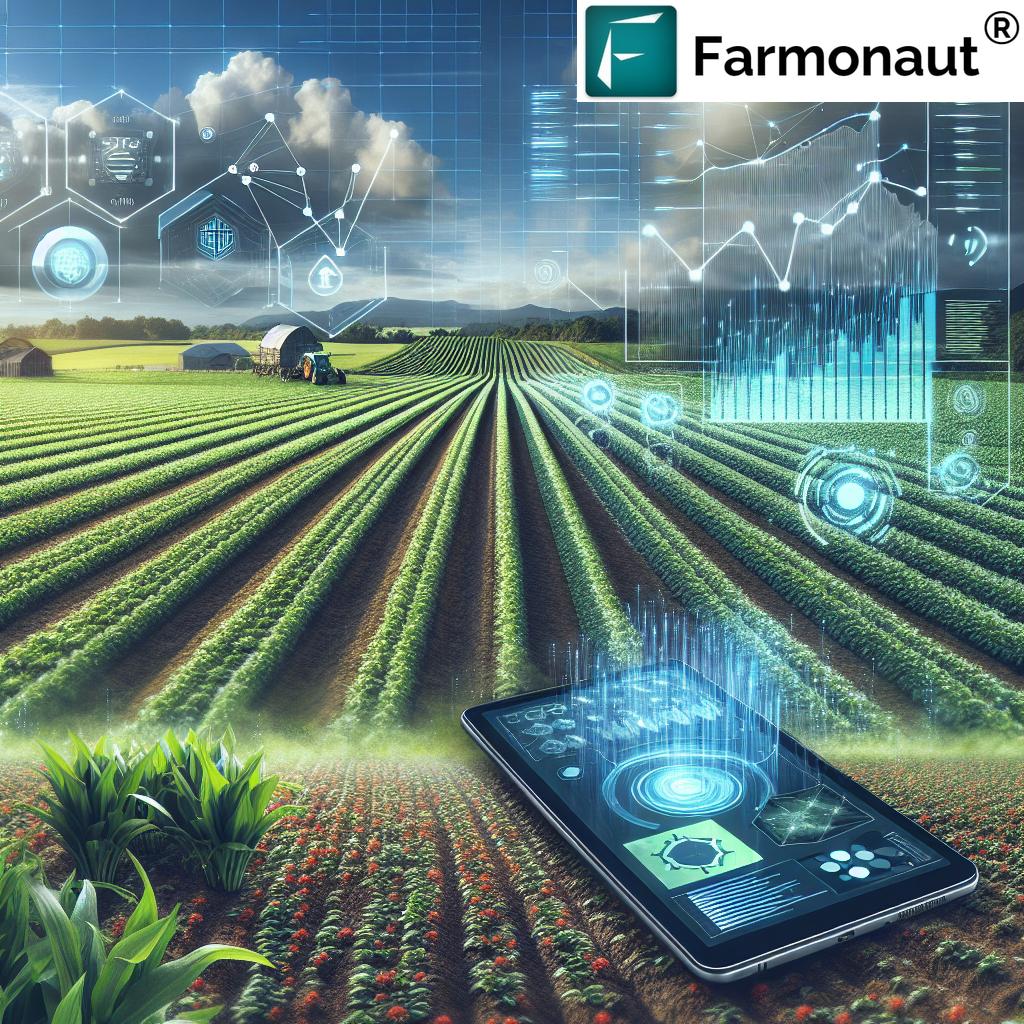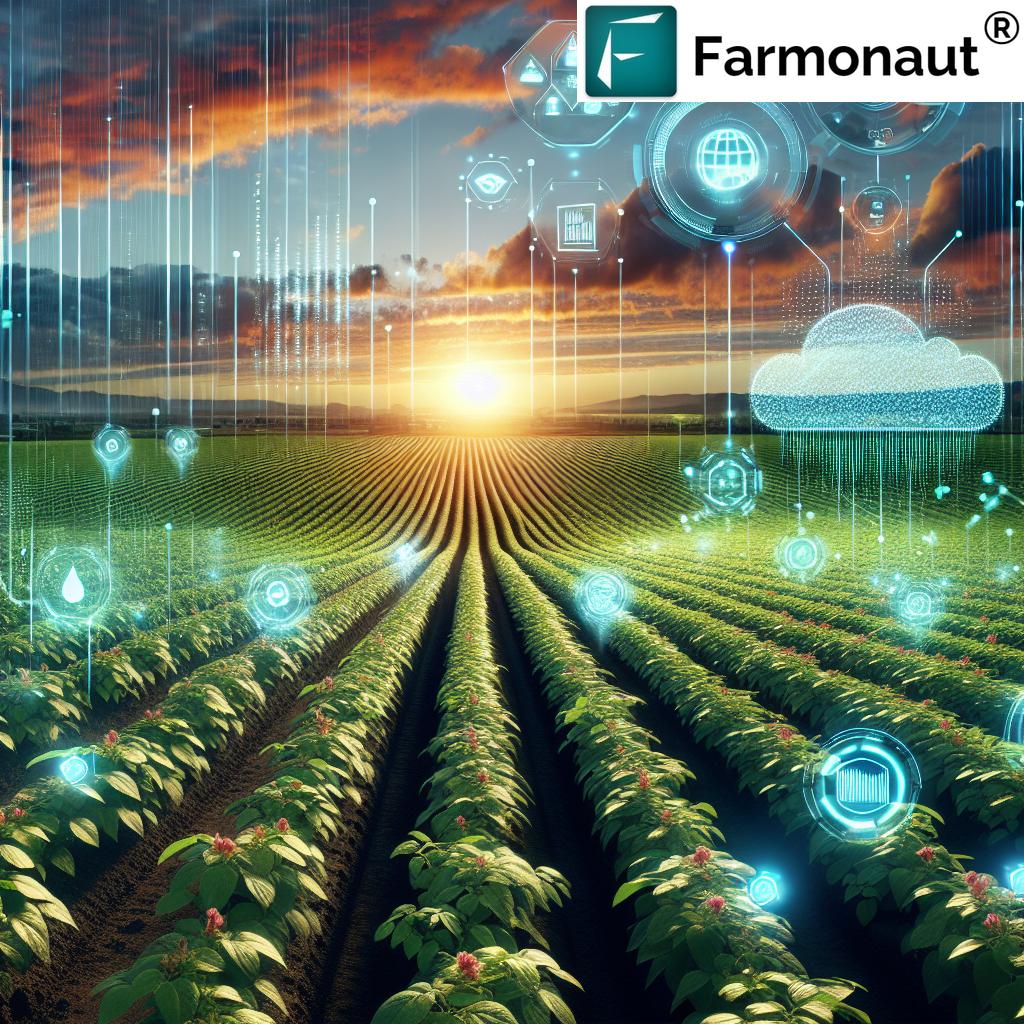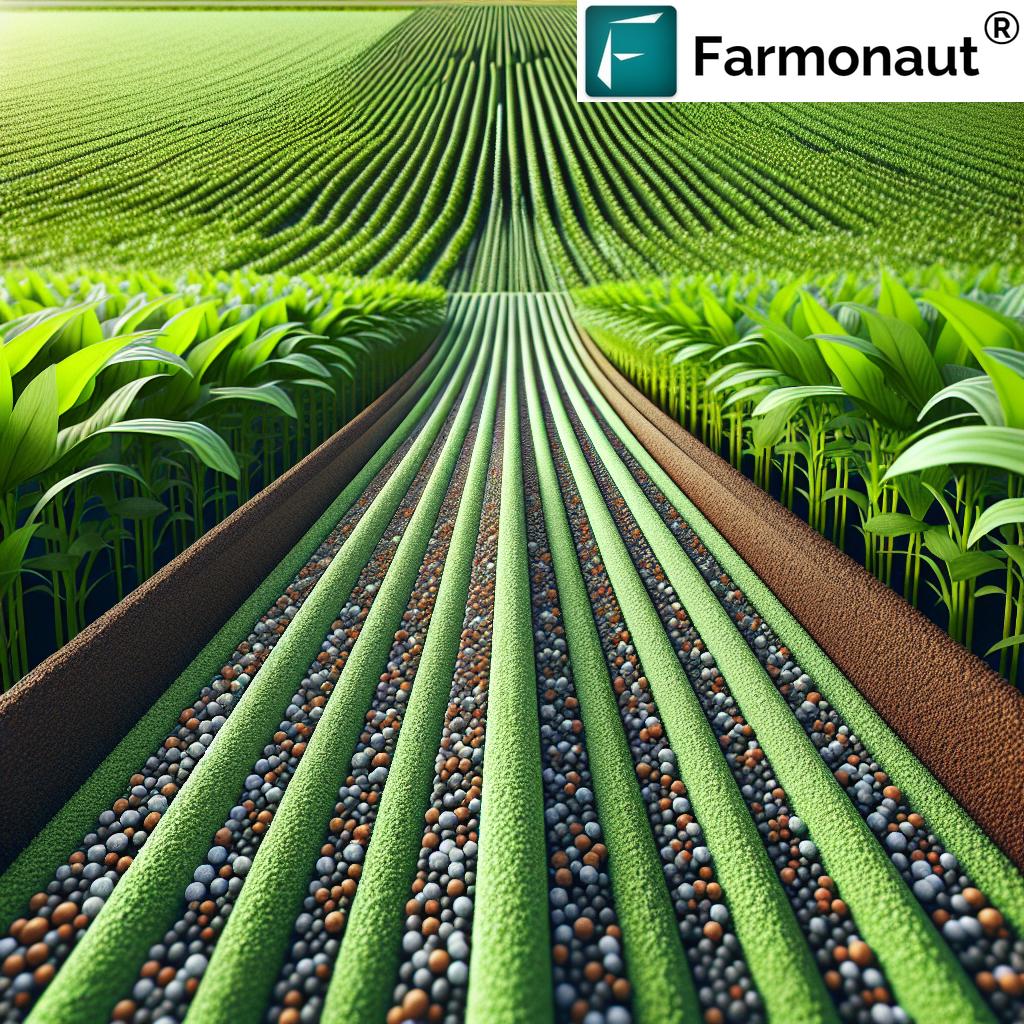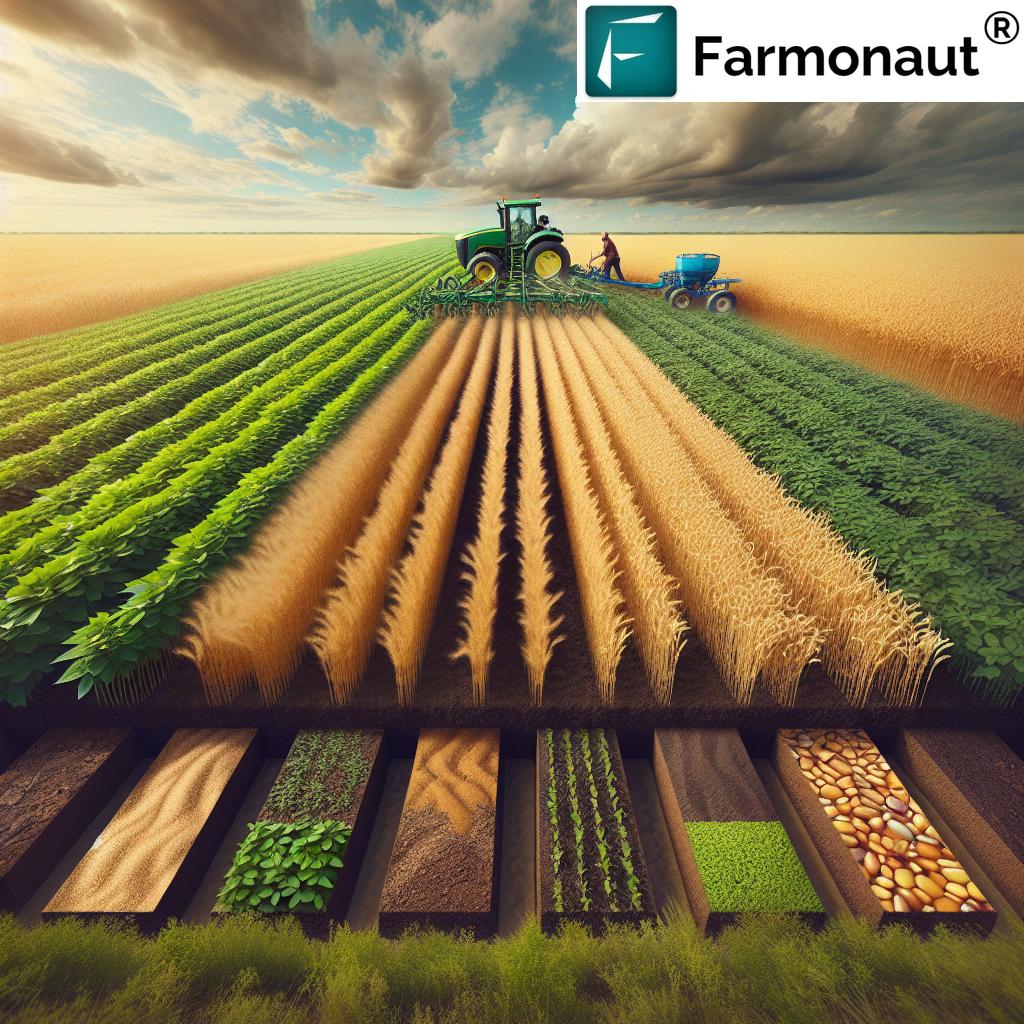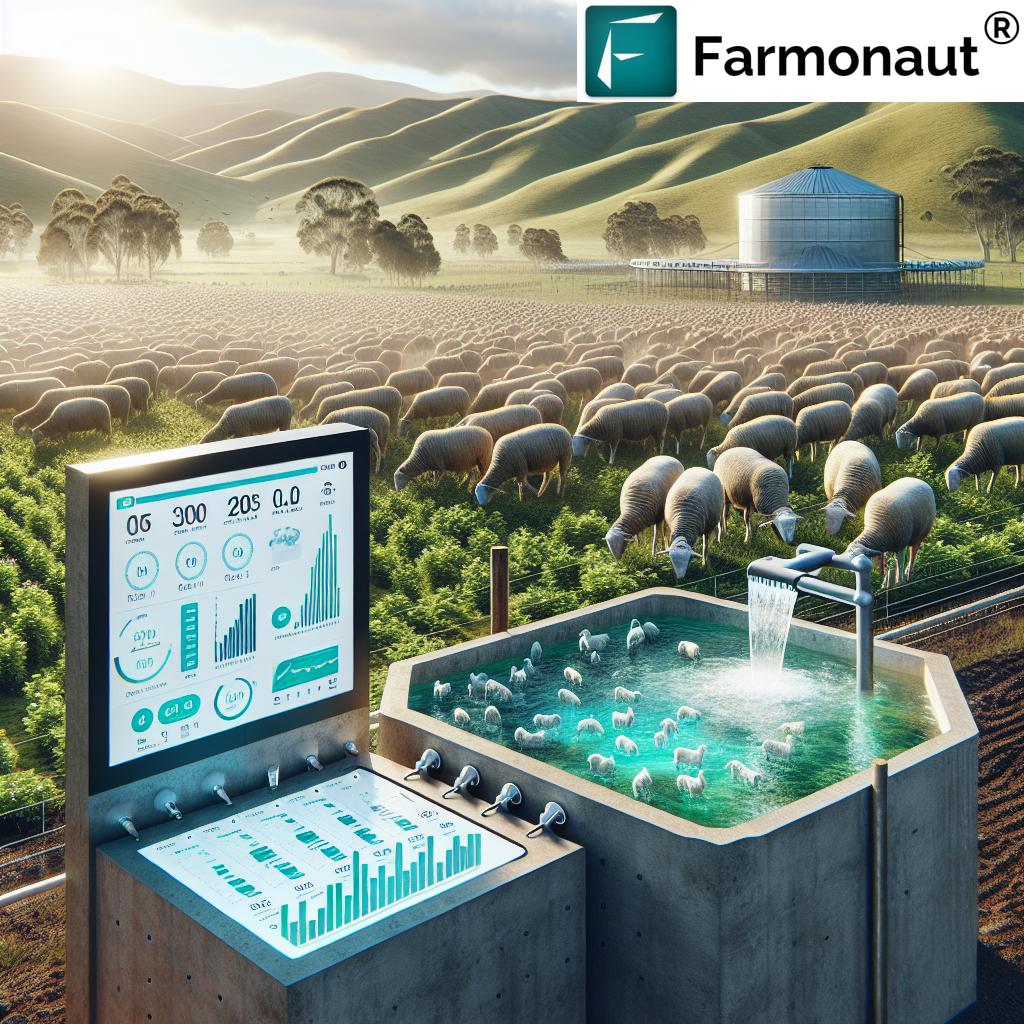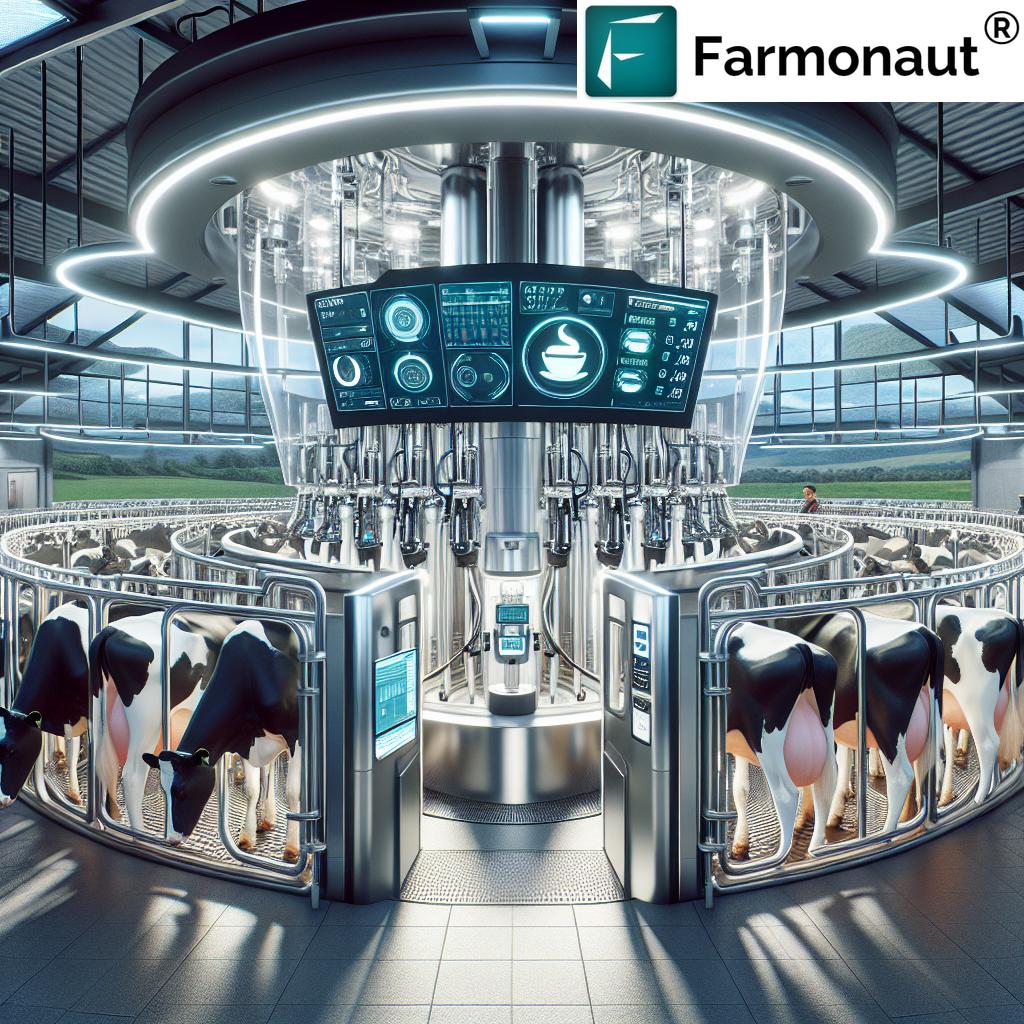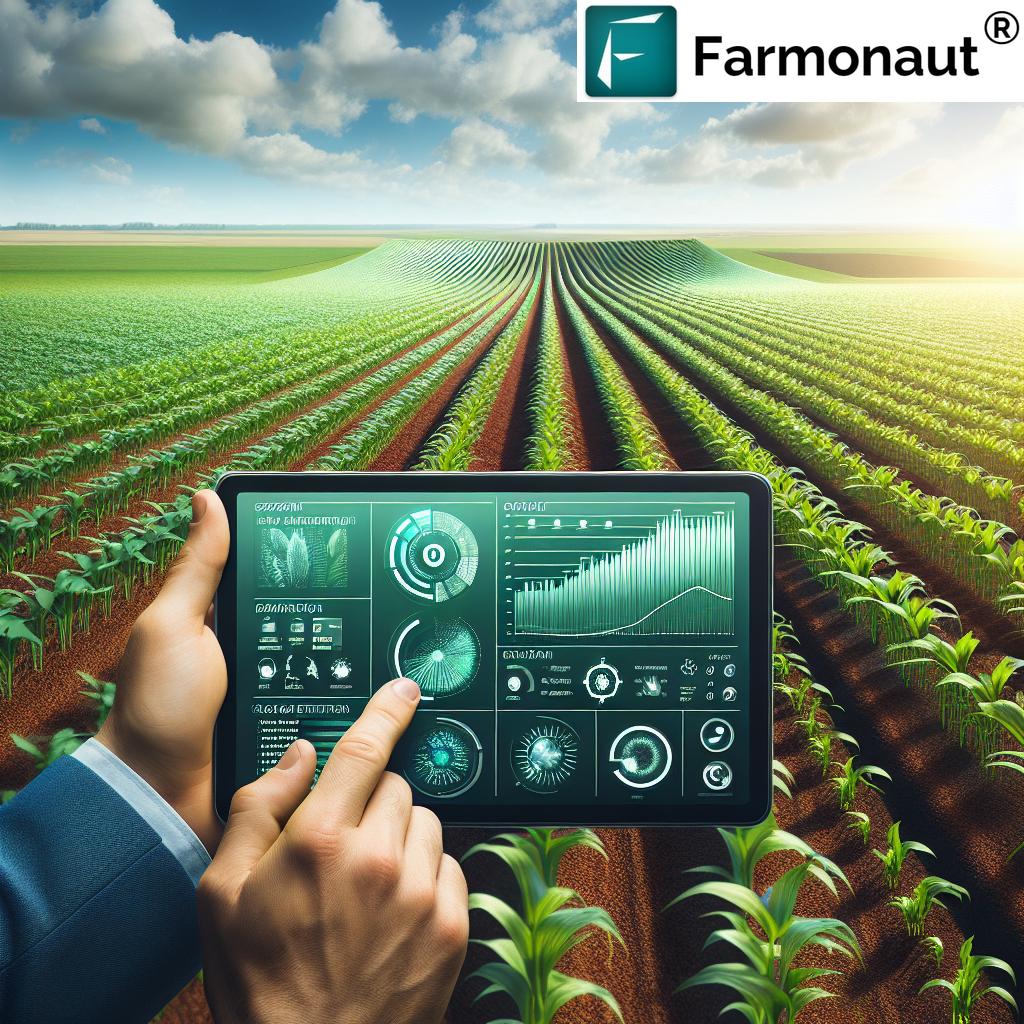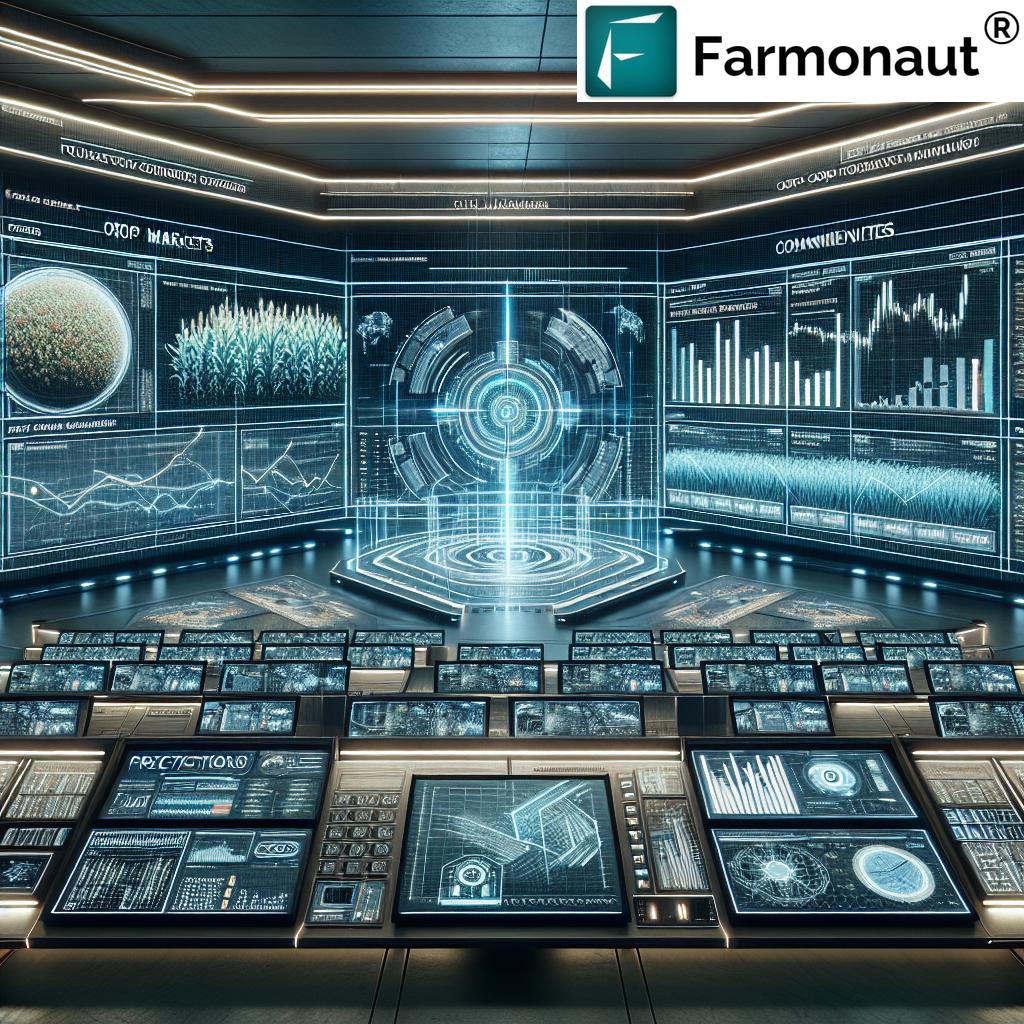7 Precision Ag Solutions Revolutionizing Farming Now
“Over 70% of modern farms now use data analytics to guide planting and irrigation decisions.”
Introduction
In our rapidly evolving world, the fusion of precision agriculture, data-driven farming, and advanced technology is transforming the future of farming. By integrating IoT in agriculture, drones for crop monitoring, machine learning, and advanced analytics, we are unlocking new possibilities in optimizing crop yields, enhancing resource management, and driving sustainable agricultural practices. In this comprehensive blog, we will explore seven pioneering solutions that are reshaping the way farmers manage and monitor their fields.
Today’s farming ecosystem relies on seamlessly blending GPS, satellite imagery, IoT sensors, and cloud-based data analytics into easy-to-use tools. As a leader in this field, Farmonaut is dedicated to democratizing access to precision farming technologies for everyone from smallholder producers to major agricultural enterprises through its advanced, scalable platforms.
Overview: What is Precision Agriculture?
Precision agriculture—often called precision farming—is a set of innovative, data-centric practices that use cutting-edge technologies to optimize every step of the farming process. By leveraging tools such as satellite positioning, IoT devices, cloud analytics, and real-time monitoring systems, we can make highly accurate, timely decisions for each portion of a field. This approach creates a paradigm shift: moving from blanket, uniform treatments to site-specific interventions based on measurable soil and crop health variables.
The core philosophy centers around optimizing input use (such as water, fertilizers, and pesticides) by accurately identifying variations in soil properties, moisture, nutrient levels, and environmental conditions. This helps to boost yields, reduce waste, limit negative environmental impact, and conserve finite resources.
Key Benefits of Precision Agriculture
- Enhanced Productivity:
Customizing crop treatments per field zone leads to optimal growth and higher yields. - Resource Efficiency:
Data-driven systems reduce waste by optimizing water, nutrients, and pesticide application rates. - Sustainability:
Minimizing overuse of inputs helps reduce carbon footprint and environmental pressure. - Risk Management:
Real-time monitoring enables rapid response to pest infestations, disease, and pathogen threats, cutting losses and improving financial stability.
Comparison Table: Precision Agriculture Solutions
| Solution Name | Core Technology | Key Features | Est. Yield Improvement (%) | Resource Savings (%) | Sustainability Impact |
|---|---|---|---|---|---|
| GPS & GNSS Field Mapping | Satellite Navigation, GPS, GNSS | Accurate field map creation, equipment guidance, variation analysis | 10–20 | 5–10 | Better land use, less overlap, reduced fuel usage |
| IoT Sensors | IoT devices, Wireless Networks | Soil moisture/temperature, nutrient/pH monitoring, real-time alerts | 8–15 | 15–25 | Achieves input optimization, lowers environmental risk |
| Drones & UAVs | UAVs, Multispectral Cameras, Analytics | Crop health imagery, pest/stress detection, rapid field surveys | 5–15 | 10–15 | Decreases chemical usage, promotes timely interventions |
| Variable Rate Technology (VRT) | Machine Controlled Applicators, Field Data, GPS | Precision input rates, in-field adjustment, waste reduction | 10–25 | 20–30 | Strong reduction in fertilizer/pesticide run-off |
| Data Analytics & Machine Learning | Cloud Analytics, AI, ML Algorithms | Predictive insights, soil/crop modeling, decision support | 12–20 | 10–20 | Improves long-term resource allocation, enables sustainability planning |
| Smart Irrigation Systems | IoT, Weather Data, Automation | Automated, data-driven water supply, zone-specific moisture management | 10–15 | 30–40 | Major water conservation, protects groundwater |
| Blockchain Traceability & Resource Mgmt | Blockchain, Satellite Data, Reporting Tools | Transparent supply chain, tamper-proof crop records, resource audit | 5–10 | 5–12 | Boosts food safety and ethical sourcing, supports compliance |
“Precision agriculture can reduce fertilizer use by up to 30% through advanced resource management technologies.”
7 Precision Ag Solutions Revolutionizing Farming Now
Let’s delve deep into the seven most innovative solutions that are driving the next wave of precision farming, highlighting how these technologies work, their benefits, and concrete examples of their impact across the agriculture sector.
1. GPS & GNSS-Based Field Mapping and Navigation (Precision agriculture Wikipedia)
- Focus Keyword: precision agriculture, GPS, GNSS, field mapping, navigation, satellite, accurate location, agricultural technology
At the heart of precision agriculture lies the accurate detection of field boundaries, soil variations, and the efficient mapping of every plot. GPS (Global Positioning System) and GNSS (Global Navigation Satellite System) empower us to create detailed maps of our fields, monitor equipment movements, and ensure that every inch is utilized optimally.
With these technologies, farmers and agronomists can:
- Precisely map field boundaries and variations in soil properties (pH, moisture, nutrients)
- Monitor and control agricultural equipment movements (tractor steering, seeding, spraying)
- Reduce overlap and gaps for fertilizer, pesticide, and seed application
- Improve resource allocation and field efficiency
The ability to create and analyze high-resolution field maps eliminates guesswork, making every intervention not just timely but targeted and sustainable.
For anyone managing extensive operations, Farmonaut’s Large-Scale Farm Management solution simplifies complex field mapping, enables multisite monitoring, and optimizes resource distribution across multiple plots—all via a user-friendly web or mobile interface.
2. IoT Sensors for Real-Time Data Collection
- Focus Keyword: IoT sensors, real-time, soil health monitoring, data-driven farming, environmental conditions, monitoring, agriculture, sensors, field
Key IoT applications include:
- Soil moisture and nutrient sensors – Enable precise irrigation/fertilization scheduling
- Temperature sensors – Warn of frost/heat stress for timely interventions
- Spectral sensors – Detect plant stress, disease onset, and optimize pesticide application
- Weather stations – Integrate local climate data for adaptive crop management
These IoT-powered systems link directly to farm management apps, such as Farmonaut, for effortless, actionable insight at your fingertips.
Developers and businesses can integrate real-time sensor data into their workflows using Farmonaut’s Satellite & Weather API (API Developer Docs)—delivering seamless connectivity across platforms.
3. Drones & UAVs for Crop Monitoring
- Focus Keyword: drones for crop monitoring, unmanned aerial vehicles, UAV, imagery, pest, stress, cameras, multispectral, monitoring, fields, assess
Unmanned aerial vehicles (UAVs)—commonly called drones—are transforming crop monitoring by making high-resolution field assessment rapid, cost-effective, and scalable. Fitted with multispectral cameras and advanced sensors, drones fly over fields to capture imagery that reveals:
- Variations in crop health down to individual rows or plants (using NDVI and vegetation indices)
- Pest infestations, disease outbreaks, or regions suffering from water/nutrient stress
- Areas affected by flooding, drought, or compaction
By integrating drone data with satellite imagery, farmers can assess and identify exactly where interventions are needed, saving time and reducing input costs. Drones thus play a strategic role in precision pest and disease management, while enabling seamless field scouting on challenging terrains.
If you’re interested in large-scale plantation or forest monitoring, Farmonaut’s Crop Plantation, Forest, and Advisory tools support multispectral monitoring and AI-powered advisories for every hectare.
4. Variable Rate Technology (VRT) in Farming
- Focus Keyword: variable rate technology in farming, VRT, application, fertilizers, pesticides, resource allocation, sustainable
Variable Rate Technology (VRT) revolutionizes input application by allowing us to adjust rates of seeds, fertilizers, and pesticides on the go—matching the needs of each field zone.
Benefits of VRT:
- Reduces waste by applying only what’s needed
- Minimizes environmental impact of runoff or over-application
- Maximizes crop productivity and yields where growth conditions are optimal
- Improves profitability via smarter resource management
For instance, using detailed soil maps and real-time data from platforms like Farmonaut, machine controllers can adjust fertilizer rates as equipment moves across a field—ensuring precise resource allocation and reducing chemical footprints.
Streamline your fleet, input applications, and labor management with Farmonaut’s Fleet and Resource Management solution—designed for both small-scale and large agribusiness needs.
5. Data Analytics & Machine Learning in Agriculture
- Focus Keyword: data analytics, machine learning in agriculture, AI, data-driven farming, predictive analysis, soil, yield, decision support
The vast volume of data now collected across agricultural systems is only useful if we can interpret it intelligently. That’s why advanced data analytics and machine learning models are indispensable to modern farming.
With powerful AI-driven platforms such as Farmonaut:
- Soil organic carbon levels can be predicted to support Carbon Footprinting and monitor sustainability.
- Digital soil maps and crop health maps enable zone-specific actions for optimal yields.
- Risk analysis (e.g., drought, disease) can suggest timely interventions and lower uncertainty for farmers.
- Yield estimation, input use planning, and resource allocation recommendations improve profitability.
Farmonaut’s Jeevn AI Advisory System combines satellite imagery, weather data, and machine learning to deliver real-time farm management insights and custom advisories—empowering data-driven, smart farming decisions.
6. Smart Irrigation Systems
- Focus Keyword: smart irrigation systems, water, moisture, sensors, sustainable, optimize, application, resource management
Water is agriculture’s most precious resource. Smart irrigation systems utilize integrated sensors, IoT networks, and weather models to deliver precise, zone-specific moisture to crops.
Key features:
- Automated, adaptive irrigation scheduling based on real-time field data
- Zone-based control for multi-crop, multi-field operations
- Helps reduce water use by 30–40% compared to traditional methods
- Protects crucial aquifers and promotes sustainable groundwater management
By minimizing under- or over-irrigation, these systems improve crop quality, lower waste and support sustainable agricultural practices.
7. Blockchain-Based Product Traceability & Resource Management
- Focus Keyword: blockchain, traceability, resource management, supply chain, transparency, monitoring, verification, sustainability impact
Traceability is rapidly becoming a requirement for global food and fiber supply chains. Blockchain technology enables transparent, tamper-proof records that document every stage of a crop—from seed to harvest, to market. This digital ledger is especially important for:
- Food safety and product recall management
- Proving sustainability, carbon accountability, or organic certification
- Enhancing trust and transparency for corporate and consumer clients
- Enabling third parties (banks, insurers) to verify crop status or area claims
Unlock full transparency and secure records for every crop lifecycle with Farmonaut’s Traceability Platform. For improved access to finance, see our Crop Loan and Insurance Verification offering—delivering satellite-powered evidence for farm area and crop status.
Farmonaut: Making Precision Agriculture Affordable and Accessible
At Farmonaut, our vision is to ensure that precision agriculture is not merely the privilege of the few, but a reality for farmers and agri-entrepreneurs everywhere. Our platform delivers:
- Real-time crop health monitoring: Leverage satellite imagery and multispectral analysis for zone-specific interventions.
- AI-powered advisories: Our Jeevn AI system crafts personalized insights—combining satellite data, weather forecasts, and machine learning predictions for each farm.
- Blockchain-based traceability: Empower corporate clients and agri-exporters with verifiable, transparent records for supply chain compliance.
- Fleet and resource management: Track machinery, monitor logistics, and optimize resource allocation in one seamless dashboard.
- Carbon footprinting: Monitor, report, and reduce carbon emissions across operations with our advanced tracking tools (learn more).
Our journey focuses on lowering technology barriers—no expensive hardware required, scalable by farm size or cooperative, with web, iOS, and Android apps for easy access. APIs are available for full system integration across agribusiness and enterprise platforms.
Key Challenges & Considerations in Precision Ag Adoption
- High Initial Investment: Advanced technology can be expensive for smallholder farmers; platforms like Farmonaut aim to reduce this barrier by providing affordable, scalable solutions using satellite data and cloud tools instead of hardware-heavy systems.
- Data Management: Analytics requires robust digital infrastructure and tech-savvy users to leverage insights derived from high-volume data streams.
- Technological Literacy & Training: Comprehensive training and support are essential to empower farmers to utilize sophisticated precision farming technologies effectively.
- Connectivity Gaps: Adequate internet access is essential to enable real-time data transmission and cloud analytics, especially in remote or rural areas.
Our commitment is to provide ongoing education, support, and technical resources to maximize your return from every precision ag investment.
The Future of Precision Farming: Empowering Global Agriculture
Looking forward, the next decade will see precision agriculture propelled by:
- Artificial Intelligence and Predictive Analytics for smarter decision support
- Wider deployment of autonomous machines and robots in field operations
- Expansion of IoT in agriculture for granular real-time monitoring of every metric
- Further democratization of advanced technology, bringing the benefits to small and marginal farmers worldwide
- Increased adoption of sustainable practices that balance productivity and environmental stewardship
As agricultural technology matures, platforms like Farmonaut are driving efforts to make these capabilities accessible and affordable—opening a new era for data-driven, sustainable agriculture.
Precision Agriculture FAQ
What is precision agriculture and why is it important?
Precision agriculture uses advanced data, IoT sensors, drones, and digital platforms to optimize every variable in crop production. This ensures maximum yield, minimal resource waste, and sustainable farming practices—helping meet global food demands while protecting the environment.
How do IoT sensors and drones work together in agriculture?
IoT sensors continuously monitor soil health, moisture, and crop growth conditions. Drones complement them by providing aerial imagery for scoring plant stress, disease, or pest infestations. Together, these technologies enable timely, informed interventions and data-driven optimization.
What are the cost savings associated with precision farming?
Cost savings come from more efficient use of fertilizers, water, and pesticides (“right rate, right place”), lowered fuel use, and improved crop outcomes. Studies show that precision agriculture can reduce some input use by up to 30% and boost long-term profitability.
Can smallholder farmers benefit from precision agriculture?
Absolutely! With affordable, satellite-based solutions like Farmonaut, even smallholder farms can access real-time crop health monitoring, digital traceability, and AI-powered advisories for smarter farming—all via a smartphone.
Is my farm data secure and private with Farmonaut?
Farm data is protected through secure systems, and with blockchain-based traceability, records are both tamper-proof and transparent, ensuring privacy and enhanced trust for all users.
Farmonaut Subscription Options
Conclusion & Next Steps
The age of precision agriculture is now—and it’s redefining what’s possible in farming. By integrating GPS, IoT, drones, and machine learning with proven management practices, we optimize yields, resource allocation, and sustainability for every field, globally.
If you’re ready to drive productivity, cut waste, and future-proof your farm—explore Farmonaut’s suite of precision agriculture tools through our web or mobile apps today.
Together, let’s lead the agricultural revolution—making every hectare count, every action sustainable, and every harvest more rewarding.





